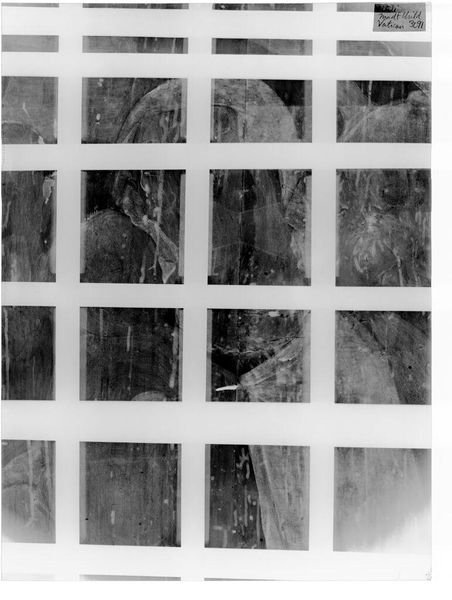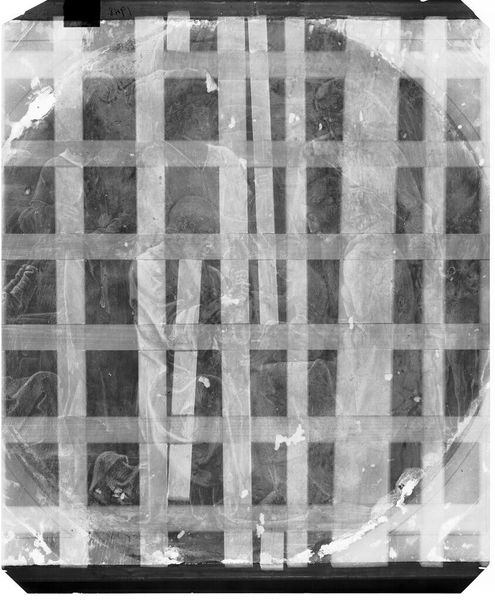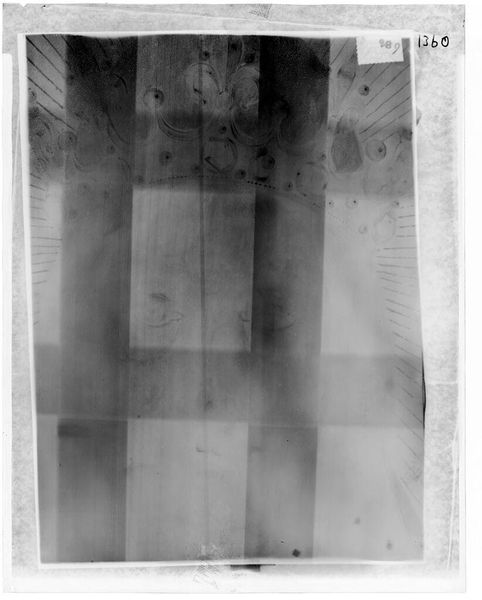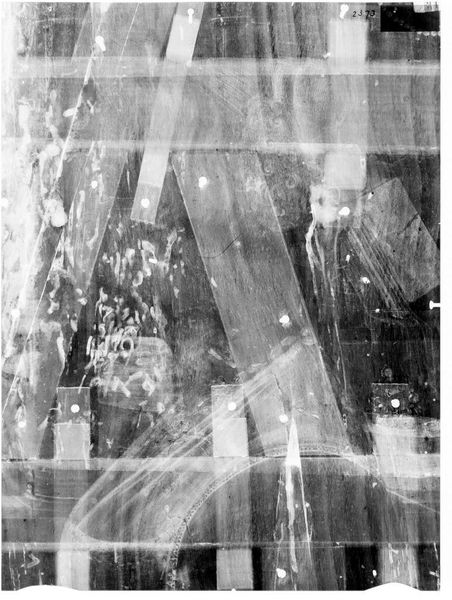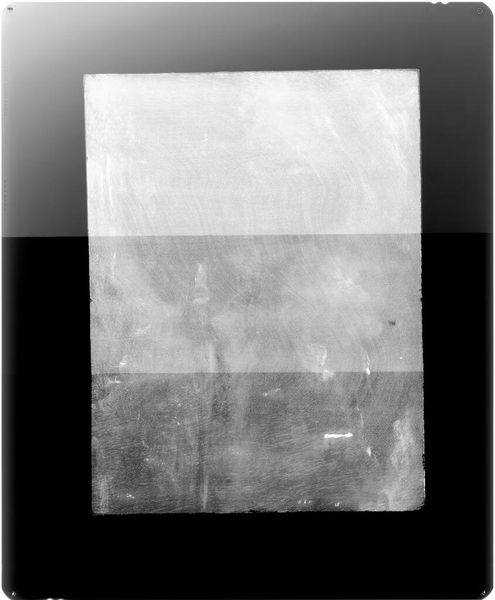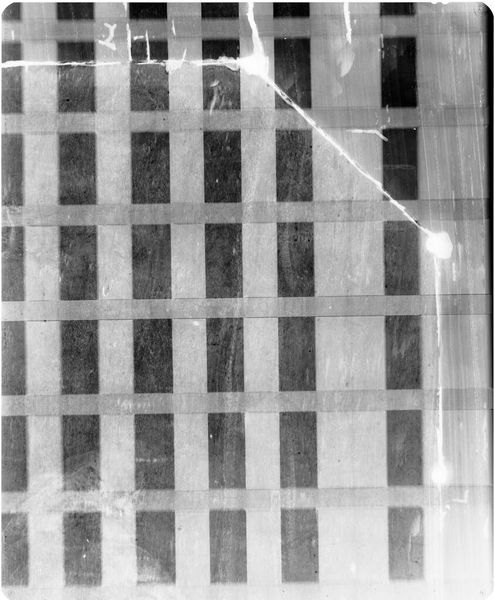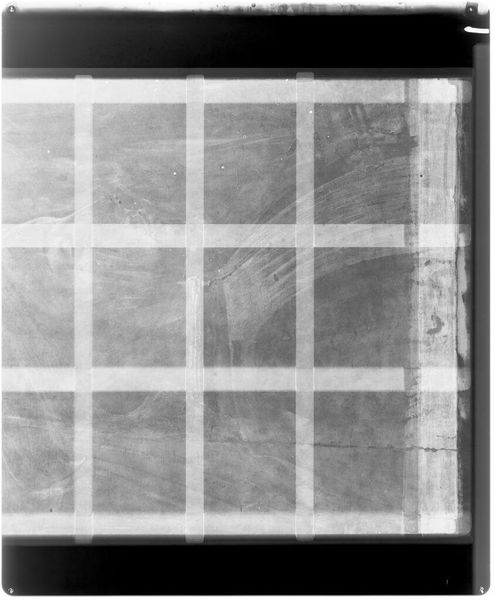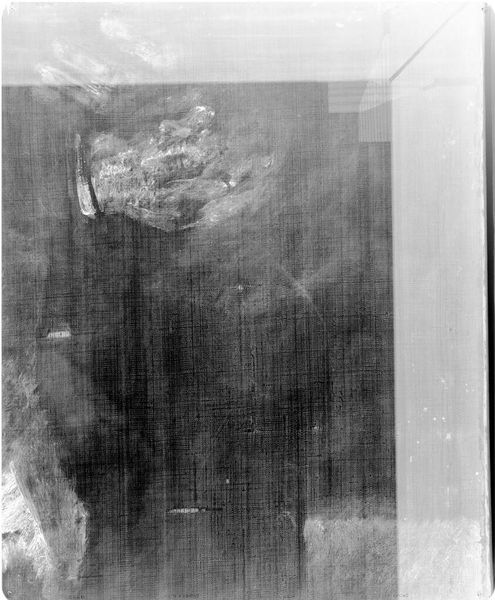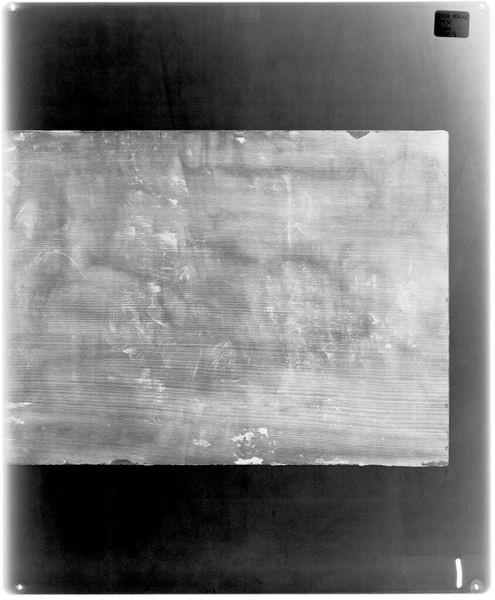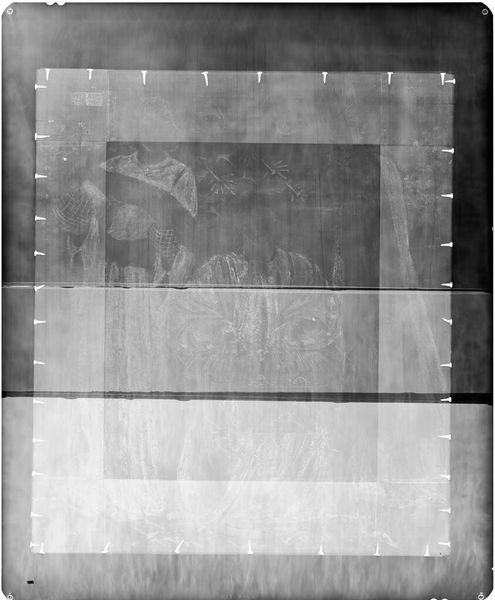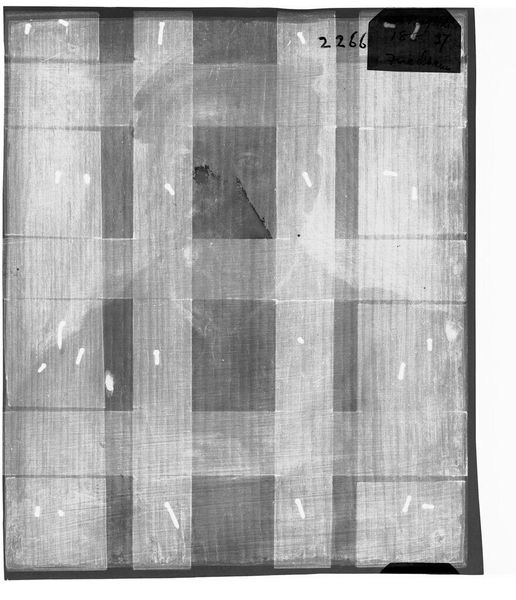
Copyright: John Hilliard,Fair Use
Editor: Here we have John Hilliard’s 2004 photograph, “Four Subjects Evenly Divided Around A Prepared Ground.” It’s a stark, black and white image with a strange tension. A pristine white rectangle is juxtaposed against a background of what appears to be… refuse? What am I supposed to make of it? Curator: Notice how Hilliard’s photographic process inherently links the 'high' art of the white rectangle with the abject materials surrounding it. What appears as "refuse" may in fact be the remnants, the offcuts and leavings, from the art making process itself. Editor: So you're suggesting the so-called “mess” is part and parcel of the creation of the art object? The photography collapses the distinction between the art and its messy origins? Curator: Precisely! Consider the implications. Where does the art truly reside? In the final product or the totality of its making? Hilliard forces us to confront the usually invisible labor and materials inherent in artistic production, which so often remain unacknowledged. What does it mean to present these discards, these traces, so directly alongside the formal purity of the white surface? Editor: It challenges the clean, detached aesthetic that we often associate with modernism. Is he suggesting a commentary on artistic consumption itself? Curator: A relevant consideration! Look at the monochrome nature of the print, this in itself could allude to earlier traditions and debates around representation in art production. Does the photographic nature of the piece enhance or detract from its potential conceptual reading? Editor: That’s really interesting! I had only considered the surface-level composition, but your reading has shed light on its deeper themes about labor and process. Curator: And now, how might we apply such an understanding to other works, blurring the arbitrary lines we often draw between "art" and "craft," between the finished product and its origins?
Comments
No comments
Be the first to comment and join the conversation on the ultimate creative platform.

